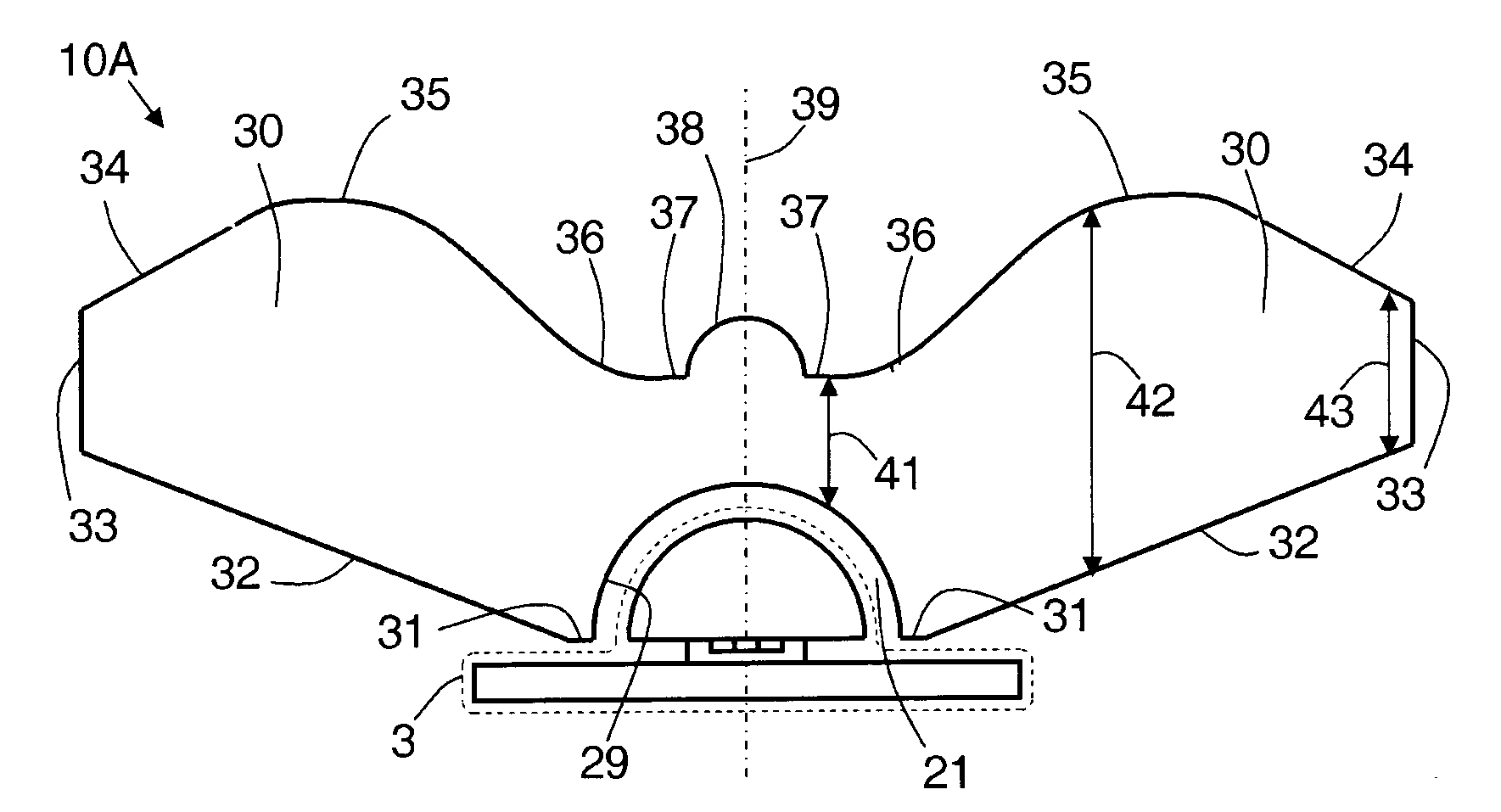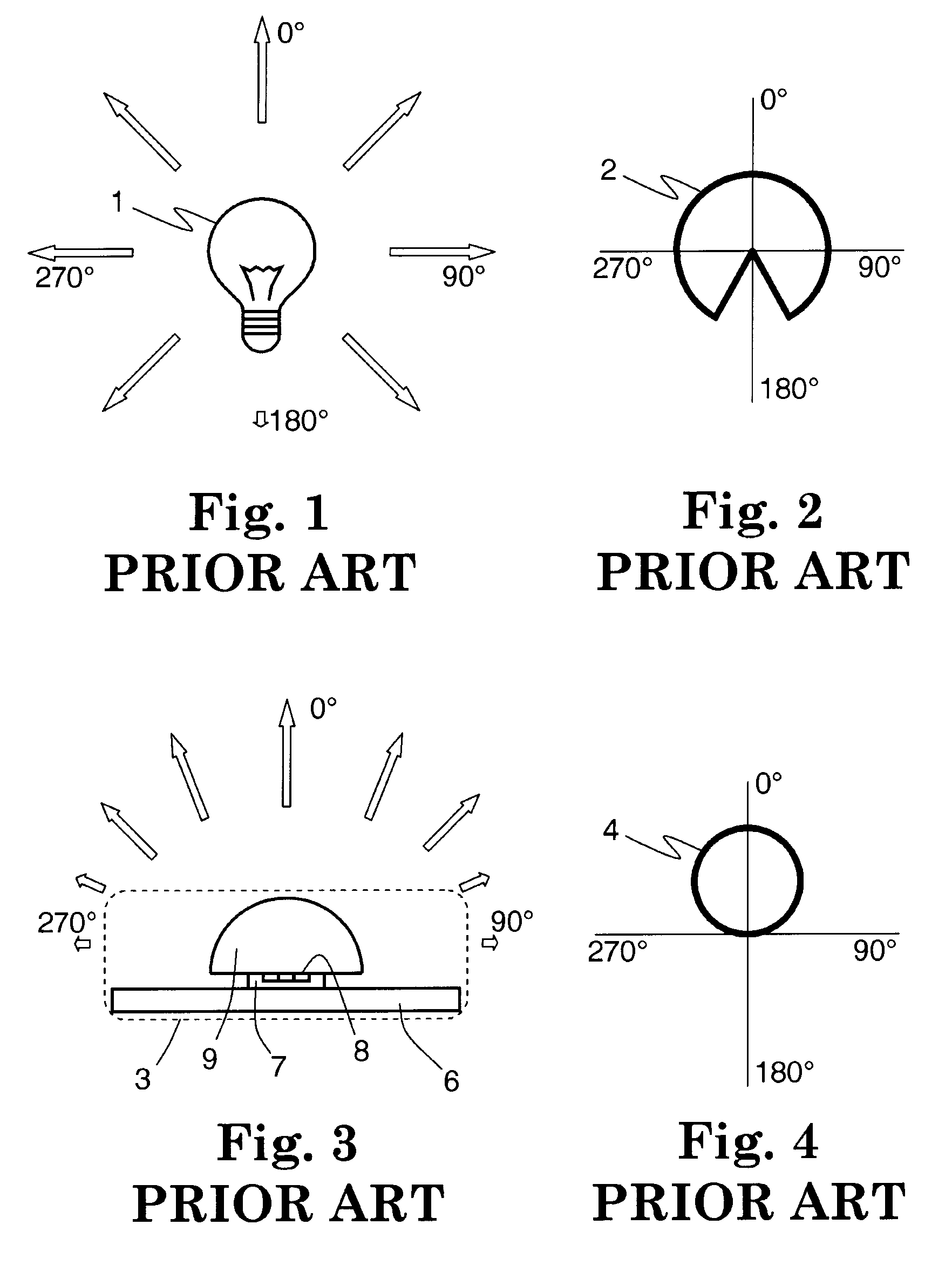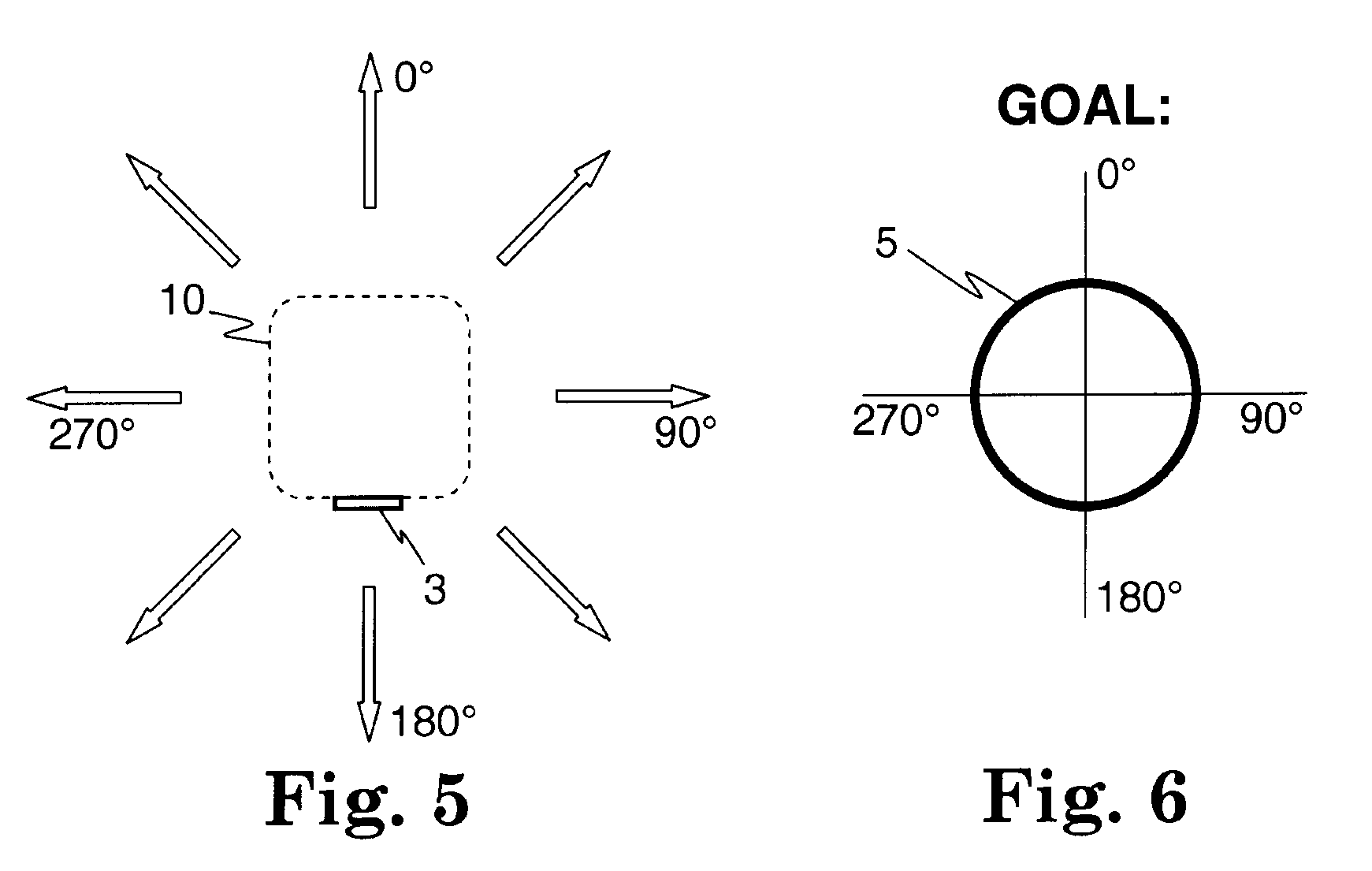Beam spreading optics for light emitting diodes
a technology of light-emitting diodes and beam spreading optics, which is applied in the direction of instruments, discharge tubes, luminescnet screens, etc., can solve the problems of falling off of relative power, complicated mounting arrangements, and time-consuming and labor-intensive problems
- Summary
- Abstract
- Description
- Claims
- Application Information
AI Technical Summary
Benefits of technology
Problems solved by technology
Method used
Image
Examples
Embodiment Construction
[0041]An optical element is disclosed, for receiving relatively narrow light from a planar light-emitting diode (LED) source, and for redistributing the light into a relatively wide range of output angles that span a full 360 degrees. The element may be used to retrofit existing fixtures that were originally designed for incandescent bulbs with LED-based light sources that have similar emission profiles. The element is small enough so that it may be packaged along with an LED module and its control electronics in the volume envelope of an incandescent light bulb. An exemplary element is a single, transparent, rotationally-symmetric lens that has a batwing shape in cross-section, extending angularly away from a longitudinal axis. The lens also includes a variety of curved, straight, specular and, optionally, diffuse portions on its longitudinal and transverse faces, all of which cause a variety of internal and external reflections, refractions, and, optionally, scattering. As such, m...
PUM
 Login to View More
Login to View More Abstract
Description
Claims
Application Information
 Login to View More
Login to View More - R&D
- Intellectual Property
- Life Sciences
- Materials
- Tech Scout
- Unparalleled Data Quality
- Higher Quality Content
- 60% Fewer Hallucinations
Browse by: Latest US Patents, China's latest patents, Technical Efficacy Thesaurus, Application Domain, Technology Topic, Popular Technical Reports.
© 2025 PatSnap. All rights reserved.Legal|Privacy policy|Modern Slavery Act Transparency Statement|Sitemap|About US| Contact US: help@patsnap.com



